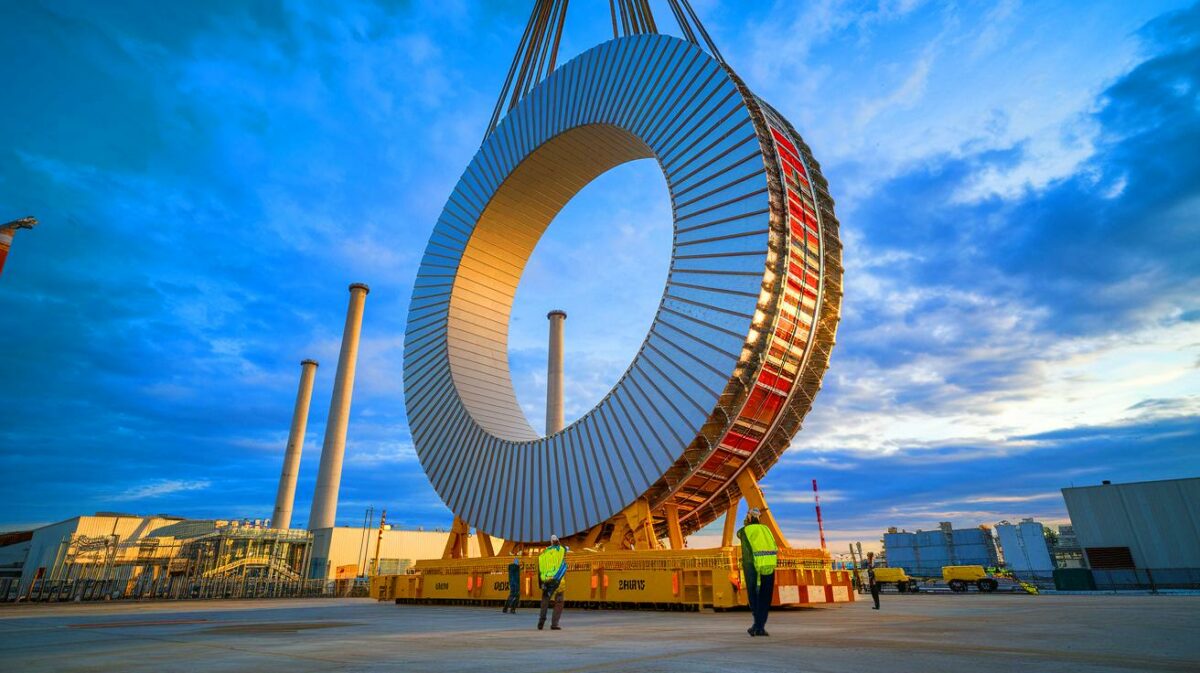| IN A NUTSHELL |
|
The ambitious journey of nuclear fusion is taking a significant leap forward with the completion of a pivotal component for the ITER project. The United States has delivered a colossal superconducting magnet, an essential part of the world’s largest fusion experiment located in France. This remarkable structure, standing at 59 feet tall, plays a crucial role in the ongoing efforts to harness the power of fusion energy. As the world watches, the assembly of this technological marvel brings us closer to realizing the dream of unlimited, clean energy.
The Role of the Central Solenoid
The central solenoid is the heart of the ITER fusion reactor, designed to initiate and sustain the plasma necessary for nuclear fusion. Comprising six individual magnetic modules, each weighing approximately 267,000 pounds, this superconducting magnet is pivotal in maintaining the delicate balance required for fusion reactions. The central solenoid’s primary function is to confine and stabilize the plasma, enabling the high temperatures and pressures needed for fusion.
Ensuring the stability of such a massive structure requires a robust support system. The solenoid’s exoskeleton, sometimes referred to as a cage, is engineered to withstand the extreme forces generated during the fusion process. As David Vandergriff, a lead engineer at Oak Ridge National Laboratory, highlights, the solenoid’s efficiency is contingent on its support structure. The successful integration of this component marks a significant milestone in the ITER project, solidifying its place as a groundbreaking endeavor in nuclear science.
The Collaborative Effort Behind the Engineering
The construction of the solenoid’s support structure involved a collaborative effort among eight American companies, showcasing the collective expertise required to tackle such a monumental task. One of the standout contributions came from Superbolt in Pennsylvania, which developed the critical technology to secure the assembly under extreme conditions. The intricate design features 27 vertical connectors, or tie plates, forming the backbone of the cage. These components link the lower foundation blocks to the upper blocks, creating a rigid enclosure around the solenoid.
Freudenberg, an engineer involved in the project, elaborates on the challenges faced during the design phase. Producing the 49-foot-long tie bars as single pieces, with stringent tolerances, was a major engineering hurdle. Collaborating with specialized forges, the team overcame these obstacles, ensuring the structural integrity of the support system. This achievement underscores the complexity and innovation inherent in the ITER project, highlighting the collaborative spirit driving its progress.
Progress and Milestones in ITER’s Assembly
As ITER progresses, the assembly of the central solenoid is nearing completion. Four out of the six modules have already been installed at the site in southern France, with the final two modules expected to be mounted by the year’s end. This phase represents the culmination of a decade-long effort by the American team, bringing to fruition a project of titanic proportions.
The successful installation of the solenoid modules is a testament to the meticulous planning and execution involved in ITER’s construction. Despite the challenges and delays that have characterized the project, its importance as a flagship for fusion energy remains undiminished. As the world looks on, ITER stands as a beacon of hope in the quest for sustainable, clean energy, setting the stage for future advancements in nuclear fusion technology.
Understanding ITER’s Global Impact
ITER, the world’s largest experimental nuclear fusion reactor, is a testament to global collaboration, involving 35 countries, including the United States, China, India, and the European Union. The project’s objective is to demonstrate the feasibility of fusion energy by 2040, aiming to produce 500 MW of power from just 50 MW of input. Originally estimated at $5 billion, the project’s cost has surged to nearly $24 billion, with funding predominantly from the EU and contributions from other member countries.
Located in Saint-Paul-lez-Durance, France, ITER represents a monumental effort in scientific and engineering innovation. Despite financial and logistical challenges, it continues to be a cornerstone of fusion energy research. As ITER progresses, it not only advances our understanding of nuclear fusion but also fosters international cooperation in the pursuit of a sustainable energy future.
The journey toward harnessing fusion energy is fraught with challenges, yet the progress made with ITER brings us closer to a transformative energy source. As the components of this massive project come together, one must wonder: What new breakthroughs will emerge from this daring endeavor, and how will they reshape our global energy landscape?
Did you like it? 4.6/5 (28)









Is it true that the cost of the ITER project has surged from $5 billion to almost $24 billion? 🤔